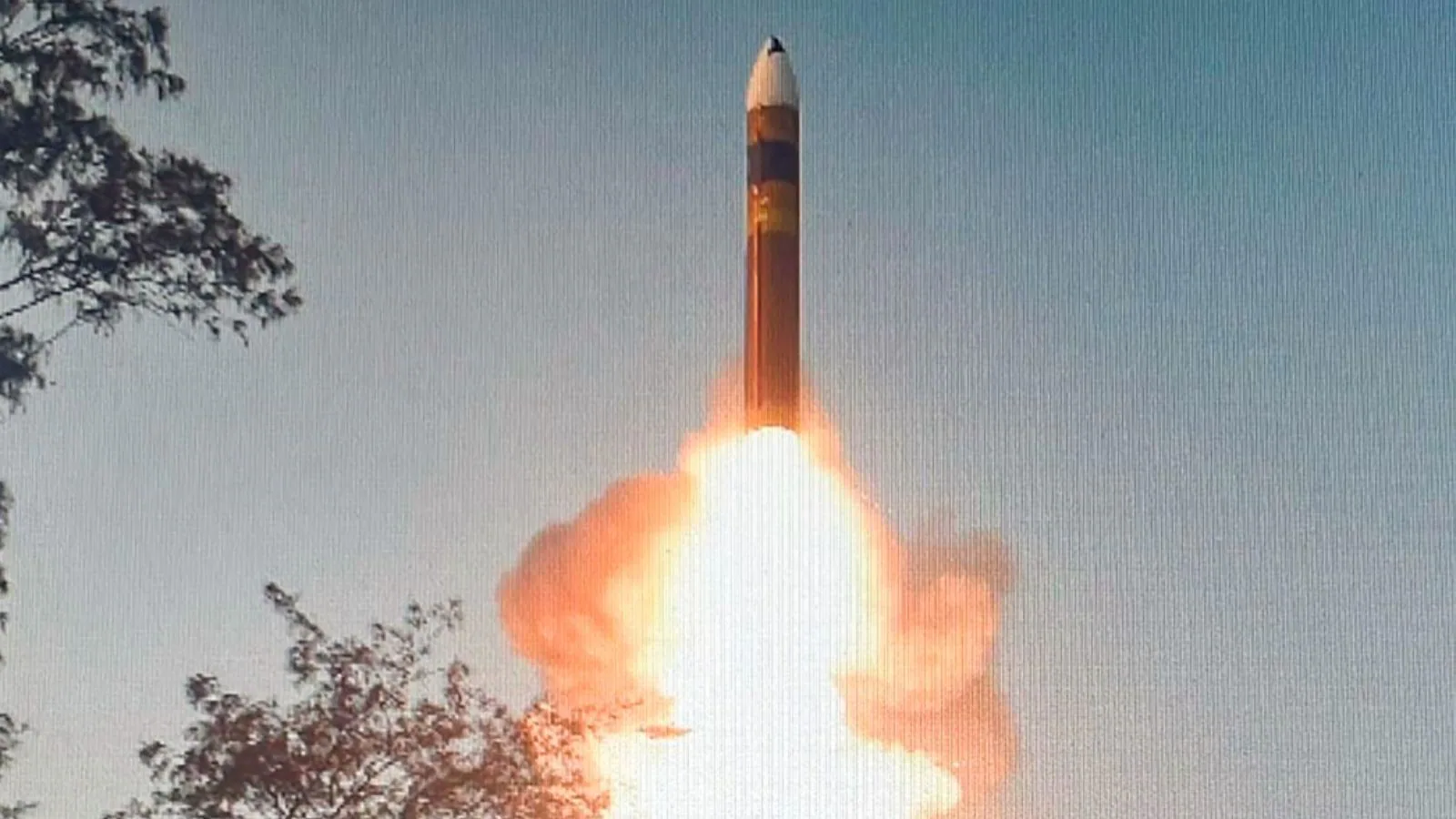By News18
In the wake of the United States’ dramatic use of bunker-buster bombs against Iran’s heavily fortified Fordow nuclear facility on June 22, India appears to be charting its own ambitious course in advanced deep-penetration strike capability. Armed with lessons from modern warfare and a growing strategic imperative to keep pace with global superpowers, India is now preparing to develop one of the most powerful non-nuclear bunker buster missiles ever conceived, and it’s doing so by modifying its intercontinental Agni-5 ballistic missile.
At the heart of this project is a bold plan by the Defence Research and Development Organisation (DRDO) to build a conventionally armed variant of the Agni-5. While the original Agni-5 is a nuclear-capable missile with a range exceeding 5,000 km, the new version is envisioned to carry an enormous 7,500 kg conventional warhead, nearly eight tonnes, designed specifically to obliterate enemy command bunkers, missile silos and fortified underground infrastructure.
Inspired By GBU-57 MOP
The inspiration, clearly, is the GBU-57A/B Massive Ordnance Penetrator, a 13-tonne precision bomb capable of penetrating 60 metres of reinforced concrete before detonation. Fourteen of these were reportedly used in the US strike on Fordow. But where the US relies on strategic bombers like the B-2 Spirit to drop such weapons, India is opting for a different approach, missile delivery.
By adapting the Agni-5 for this role, India seeks to create a delivery system that’s faster, longer-ranged and independent of large bombers. The modified missile will reportedly be able to penetrate up to 100 metres underground before explosion, significantly improving its potential against deeply buried military targets in countries like China or Pakistan.
Two Agni-5 Variants In The Works
DRDO is reportedly working on two new versions of the Agni-5. One will carry an airburst warhead designed to devastate surface targets such as enemy airfields and command centres. The other is a deep-earth penetrator, a true bunker buster. Both variants are said to weigh up to eight tonnes and will have a reduced range of around 2,500 to 3,000 km compared to the original Agni-5.
Yet what these missiles sacrifice in range, they more than make up for in destructive power. Their payloads are among the largest ever for a conventionally armed missile – potentially the heaviest in the world. Moreover, they are expected to travel at hypersonic speeds – between Mach 8 and Mach 20 – making interception nearly impossible and ensuring deep impact before detonation.
Indigenous, Hypersonic, Strategic
India’s push into this new domain is part of a broader trend toward military self-reliance and strategic parity with major powers. By designing these missiles indigenously, India avoids dependency on foreign suppliers and sends a strong signal of its growing military and technological maturity.
More importantly, India is leapfrogging conventional constraints by choosing to launch its bunker-busters via missile platforms rather than bombers. This not only reduces cost and complexity but also allows faster, longer-range strikes without needing to violate enemy airspace beforehand.
The US strike on Iran underscored how modern conflicts are increasingly fought not just above ground, but deep beneath it. Nuclear command centres, research labs, and missile storage facilities are now being housed in reinforced underground bunkers. India, faced with two nuclear-armed neighbours and an increasingly volatile region, knows it must prepare for such threats.
What’s more, the development aligns with India’s ongoing hypersonic weapons program, which includes experimental platforms like the Hypersonic Technology Demonstrator Vehicle (HSTDV). Together, these initiatives could eventually transform India’s strategic strike capabilities.
While India has traditionally maintained a no-first-use nuclear posture, the development of such massive conventional strike weapons points to a shift in doctrine, one that places more emphasis on preemptive conventional capabilities. These missiles could serve as a deterrent without the escalatory risk of nuclear exchange.
